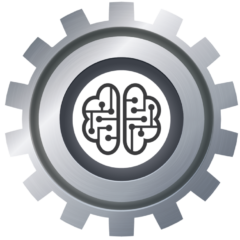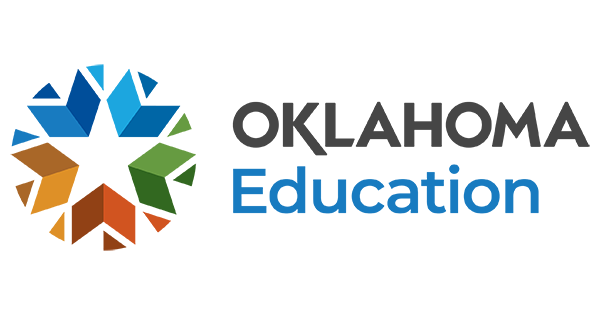NLP and Neuroplasticity
The concept of neuroplasticity and its relationship with neuro-linguistic programming (NLP) is a fascinating area of study. Neuroplasticity refers to the brain’s ability to change and adapt, allowing for the development and disconnection of neural pathways throughout our lives 3. NLP, on the other hand, is an approach that focuses on how we communicate with ourselves and others, and how this affects our behaviors and outcomes 3. While there is little scientific evidence to fully support the practice of NLP, it is believed that NLP techniques can potentially lead to new neural connections, leveraging the brain’s neuroplasticity 3. This training of the brain is done with NLP, effectively changing patterns in the brain to create new neurological connections 5.
Neuroplasticity
Neuroplasticity is the brain’s ability to change and adapt by developing and disconnecting neural pathways throughout life. On the other hand, Neuro-Linguistic Programming (NLP) is an approach that focuses on how communication with oneself and others affects behaviors and outcomes. While there is little scientific evidence to fully support the practice of NLP, it is believed that NLP techniques can potentially lead to new neural connections, leveraging the brain’s neuroplasticity. This training of the brain is done with NLP, effectively changing patterns in the brain to create new neurological connections25.
The role of neuroplasticity in improving health, particularly in addressing extreme fatigue, has been explored through brain retraining and NLP 2. These methods utilize neuroplasticity to help individuals with fatigue by potentially “reprogramming” the mind and altering unhelpful neurological connections 4 5.
Neuroplasticity, the brain’s remarkable ability to change and adapt by developing and disconnecting neural pathways throughout life, is a fundamental concept in neuroscience. This phenomenon is influenced by actions and experiences, especially the learning of new things. While the practice of Neuro-Linguistic Programming (NLP) has been popular since the 1970s, there is little scientific evidence to fully support its effectiveness. NLP is an approach that focuses on how communication with oneself and others affects behaviors and outcomes. Despite the lack of robust scientific backing, NLP techniques are believed to have the potential to lead to new neural connections, leveraging the brain’s neuroplasticity. This suggests that NLP may play a role in effectively changing patterns in the brain to create new neurological connections13.
The role of neuroplasticity in improving health, particularly in addressing extreme fatigue, has been explored through brain retraining and NLP. These methods utilize neuroplasticity to potentially “reprogram” the mind and alter unhelpful neurological connections. By leveraging the brain’s ability to change, NLP and brain retraining techniques aim to help individuals with fatigue by facilitating the creation of new, more adaptive neural pathways. While the scientific evidence for the effectiveness of NLP in this context is limited, the understanding of neuroplasticity has opened up new possibilities for utilizing the brain’s adaptive capabilities to improve health and well-being25.
Neuro-Linguistic Programming (NLP)
Neuro-Linguistic Programming (NLP) is an approach that focuses on the relationship between language, behavior, and neurological processes. It is based on the idea that our subjective experiences shape our behavior and that by changing the way we think and communicate, we can influence our patterns of behavior. NLP techniques are said to improve confidence, self-awareness, communication skills, and perception of the world. Some of the applications of NLP include programming the mind for better habits, shifting perceptions, changing behaviors, healing wounds or traumas, improving communication and influence, and becoming aware of and better managing internal processes3.
NLP is often associated with the concept of neuroplasticity, which refers to the brain’s ability to change and adapt by developing and disconnecting neural pathways throughout life. The relationship between NLP and neuroplasticity lies in the idea that NLP techniques can potentially lead to new neural connections, leveraging the brain’s neuroplasticity. This suggests that NLP may play a role in effectively changing patterns in the brain to create new neurological connections. While the scientific evidence for the effectiveness of NLP is limited, the understanding of neuroplasticity has opened up new possibilities for utilizing the brain’s adaptive capabilities to improve various aspects of life, including communication, behavior, and personal development35.
Individuals interested in NLP can undergo training programs that aim to provide a comprehensive understanding of NLP principles and techniques. These programs often focus on rewiring the brain and controlling habits, memories, and behaviors. While NLP has been a subject of controversy due to the lack of robust scientific evidence supporting its effectiveness, it continues to attract individuals seeking personal and professional development. The combination of NLP and the concept of neuroplasticity has led to the exploration of innovative approaches to address various challenges, such as improving mental clarity, managing stress, and enhancing overall well-being24.
Brain Retraining:
Instead of a single paragraph, use bullet points to make it easier to digest:
- Cognitive Behavioral Therapy (CBT):
- Identifies and challenges negative thinking patterns that drain energy.
- Replace them with more helpful and realistic thoughts, boosting self-talk and motivation.
- Consistent practice strengthens positive neural pathways, leading to increased energy levels.
- Neurofeedback:
- Provides real-time feedback on brain activity, empowering individuals to train their brainwaves.
- For fatigue, it targets specific areas:
- Enhances activity in regions linked to motivation and alertness.
- Reduces activity in areas associated with stress and negativity.
- Repeated training strengthens these desired patterns, potentially alleviating fatigue.
- Mindfulness Meditation:
- Trains the mind to focus on the present moment without judgment.
- Reduces stress and anxiety, common contributors to fatigue.
- Regular practice strengthens brain networks associated with focus and relaxation, potentially improving energy levels.
Neuro-Linguistic Programming (NLP):
NLP offers unique tools to reshape your mental landscape and tackle fatigue:
- Anchoring: Imagine feeling invigorated and alert. Now, link that feeling with a simple action like a fist pump or visualizing a bright sunrise. By repeatedly pairing the feeling with the cue, you build a brain bridge directly to energy, allowing you to activate it on demand when fatigue strikes.
- Submodalities: Picture your fatigue as a heavy, dark cloud hovering over you. Now, imagine shrinking it down, dimming its color, or replacing it with a gentle breeze. By adjusting the internal image of your fatigue, you can weaken its emotional grip and make it more manageable.
- Meta-modeling: Explore the hidden beliefs fueling your fatigue. Ask yourself: “What is this fatigue telling me about myself?” or “What would my life be like without this tiredness?” Uncovering and challenging limiting beliefs can unlock new perspectives and empower you to reclaim your energy.
Harnessing the Plastic Power: NLP and the Future of Brain Rewiring
Neuroplasticity, the brain’s remarkable ability to adapt and forge new connections, holds immense potential for overcoming mental hurdles like chronic fatigue. This is where Neuro-Linguistic Programming (NLP) steps in, offering a fascinating toolkit that purportedly harnesses this neuroplasticity to rewire unhelpful neurological patterns.
NLP techniques like anchoring, submodalities, and meta-modeling target internal representations and thought patterns. Imagine anchoring that invigorated feeling you get after a morning run to a simple gesture like a thumbs-up. By repeatedly pairing these, you build a neural bridge, allowing you to summon that energy at will – potentially weakening fatigue’s grip. Similarly, submodalities play with the internal image of fatigue, shrinking its burden or replacing it with soothing imagery, potentially altering its emotional impact. Meta-modeling delves deeper, uncovering limiting beliefs that fuel fatigue. By questioning and reframing these internal narratives, you can empower yourself to reclaim your energy.
While the scientific evidence for NLP’s effectiveness is still evolving, the connection between brain plasticity and these techniques presents an intriguing avenue for further exploration. Imagine a future where personalized NLP programs harness neuroplasticity to combat burnout, boost motivation, and unlock peak performance. The potential to reshape our internal landscapes and optimize brain function seems tantalizingly close.
 You can check out Matt’s LinkedIn account, Youtube Channel, or Podcast.
You can check out Matt’s LinkedIn account, Youtube Channel, or Podcast.Introducing my new books, ‘The Art of Critical Thinking’ and ‘The Critical Thinking Model’. Both can be read for free with Kindle Unlimited or $2.99 each via Kindle.



